Urbino, at the Galleria Nazionale delle Marche an exhibition dedicated to the Ducal Palace
The Ducal Palace of Urbino. TheFragments and the Whole is the title of the exhibition opening at the Galleria Nazionale delle Marche in Urbino from April 27 to November 5, 2023, a contemporary reinterpretation of the jewel of Italian Renaissance architecture, the Ducal Palace of Urbino home of the Gallery, curated by Luca Molinari and Luigi Gallo.
Baldassarre Castiglione, in The Book of the Courtier published in 1528, wrote: “Among his other praiseworthy things, in the rugged site of Urbino he built a palace, according to the opinion of many, the most beautiful that can be found in all of Italy; and of every opportune thing so well provided it, that not a palace but a city in the form of a palace it seemed to be.” Indeed, the richness of the Ducal Palace of Urbino lies not only in its architectural and decorative quality, but also in its being a fragment of the city, a kind of infrastructure that joins Urbino and generates a unique complexity between the private spaces of the Duke and the court, the public places of the city and the landscape toward which it opens.
Despite its central role and an essence as an undisputed masterpiece of the Italian Renaissance, the Gallery believes that the Ducal Palace in Urbino does not get the public attention and understanding it deserves. Hence the idea of a major exhibition in the building that houses the Galleria Nazionale delle Marche with the aim of helping the general public to discover the Ducal Palace, its historical and architectural importance and complexity, not only as a space of great quality housing important works of art, but also as a refined and complex spatial artifact that can engage visitors with the richness of its details and layout.
The exhibition intends to help read the historical density and richness that has been layered over the centuries, as well as to grasp its value in the present time so that the Ducal Palace will be experienced as a heritage of the present time and that the sense of wonder we will experience will be a source of cognitive enrichment for all of us.
Conceived in the mid-15th century by Federico da Montefeltro who had already been in power for about ten years, the Ducal Palace soon became the main monument of the city of Urbino and one of the most interesting artistic-architectural examples of the Italian Renaissance. Telling about the building today therefore means relating to its past, but also (as Federico did with the classical tradition) offering a contemporary reading of it that goes beyond history, proposing it as a complex organism that changes over time. It is a layered history, which is often not perceived in its richness and is made up of progressive uses and readings of monumental spaces.
“The exhibition curated with Luca Molinari,” says Luigi Gallo, director of the Galleria Nazionale delle Marche, “focuses precisely on the richness and contemporaneity of this architectural artifact, involving authors of various ages and from different disciplines who reread it in a contemporary key, highlighting the complexity and density of interpretation and use over time and in different ways. The exhibition is the result of work that has lasted several years and has been carried out also thanks to the collaboration with institutes of higher education such as the ISIA of Urbino and the Doctorate in Architecture Theory and Design of the University la Sapienza of Rome, which has made it possible to verify punctually the ability to involve this extraordinary palace of ours in the younger generations.”
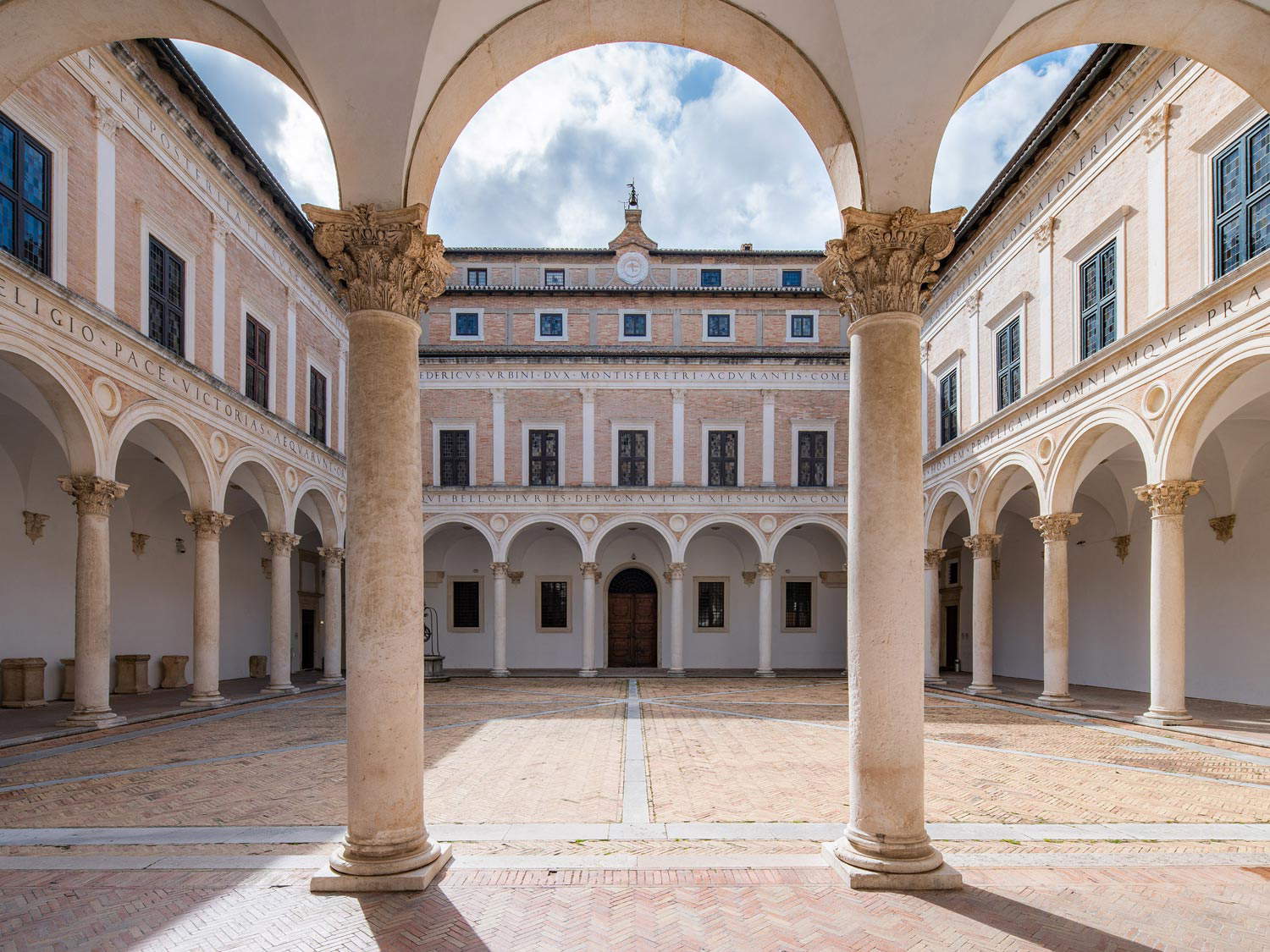
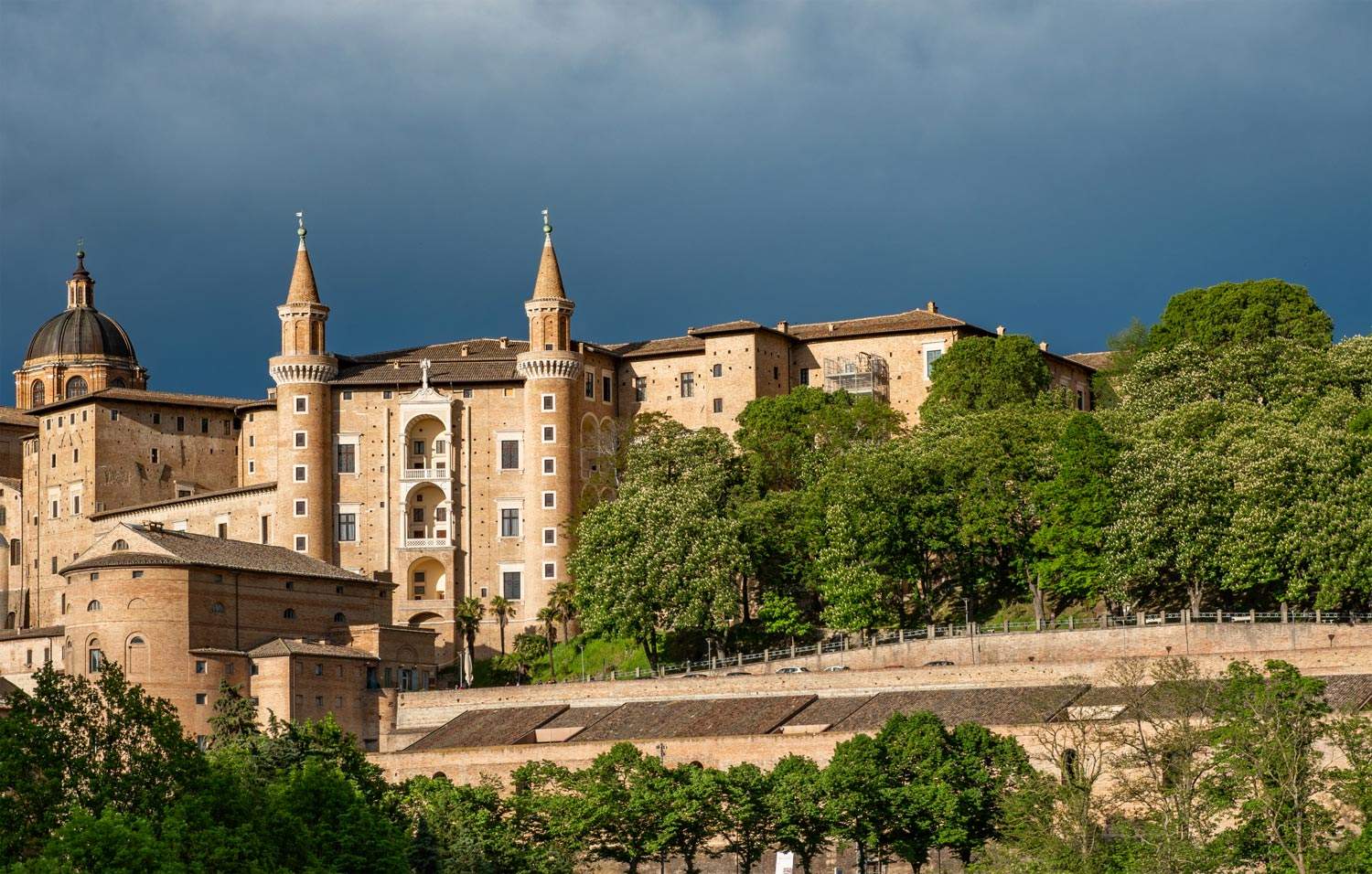 The Ducal Palace of
The Ducal Palace of The Ducal Palace of
The Ducal Palace of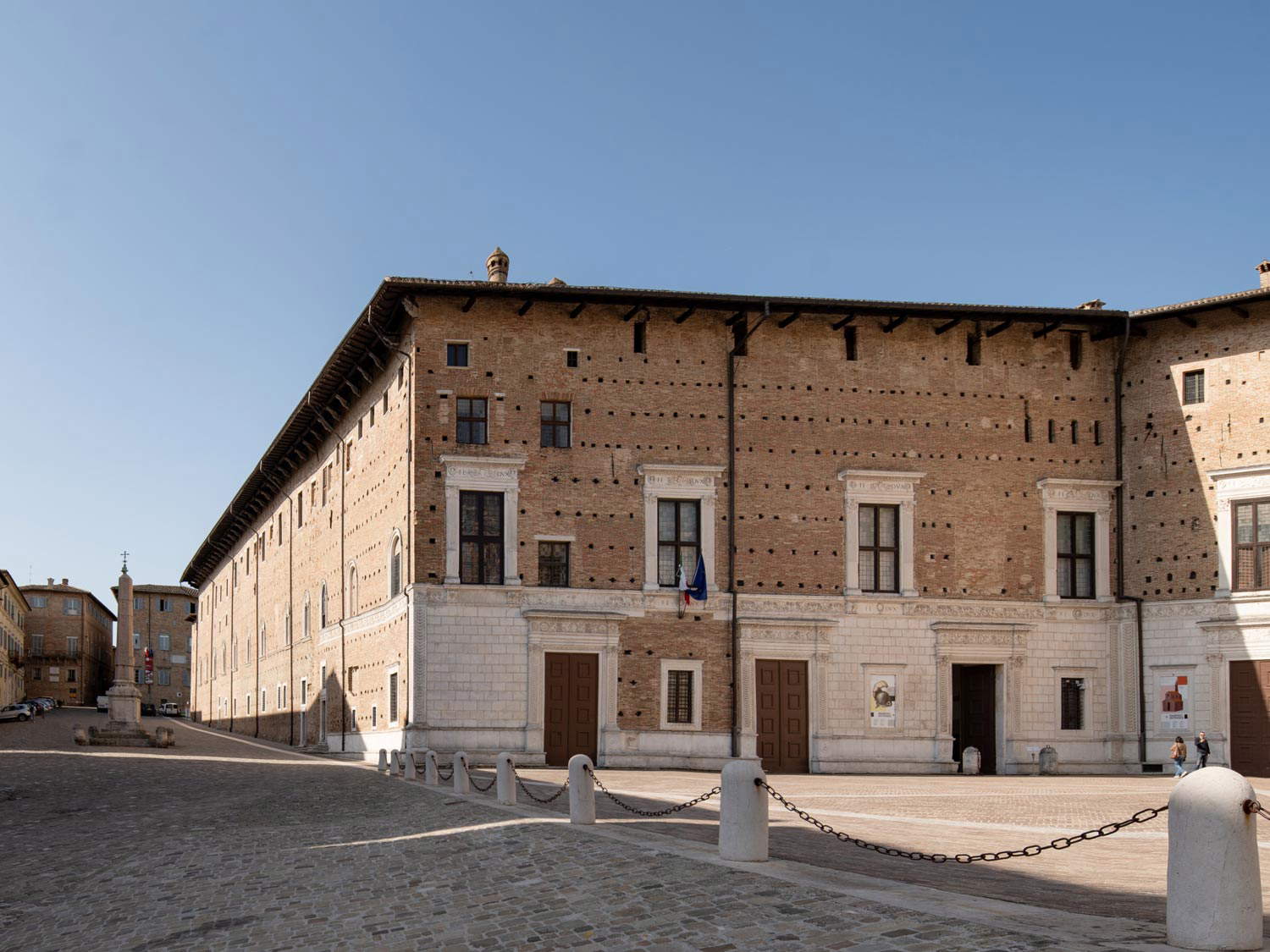 The Ducal Palace of
The Ducal Palace of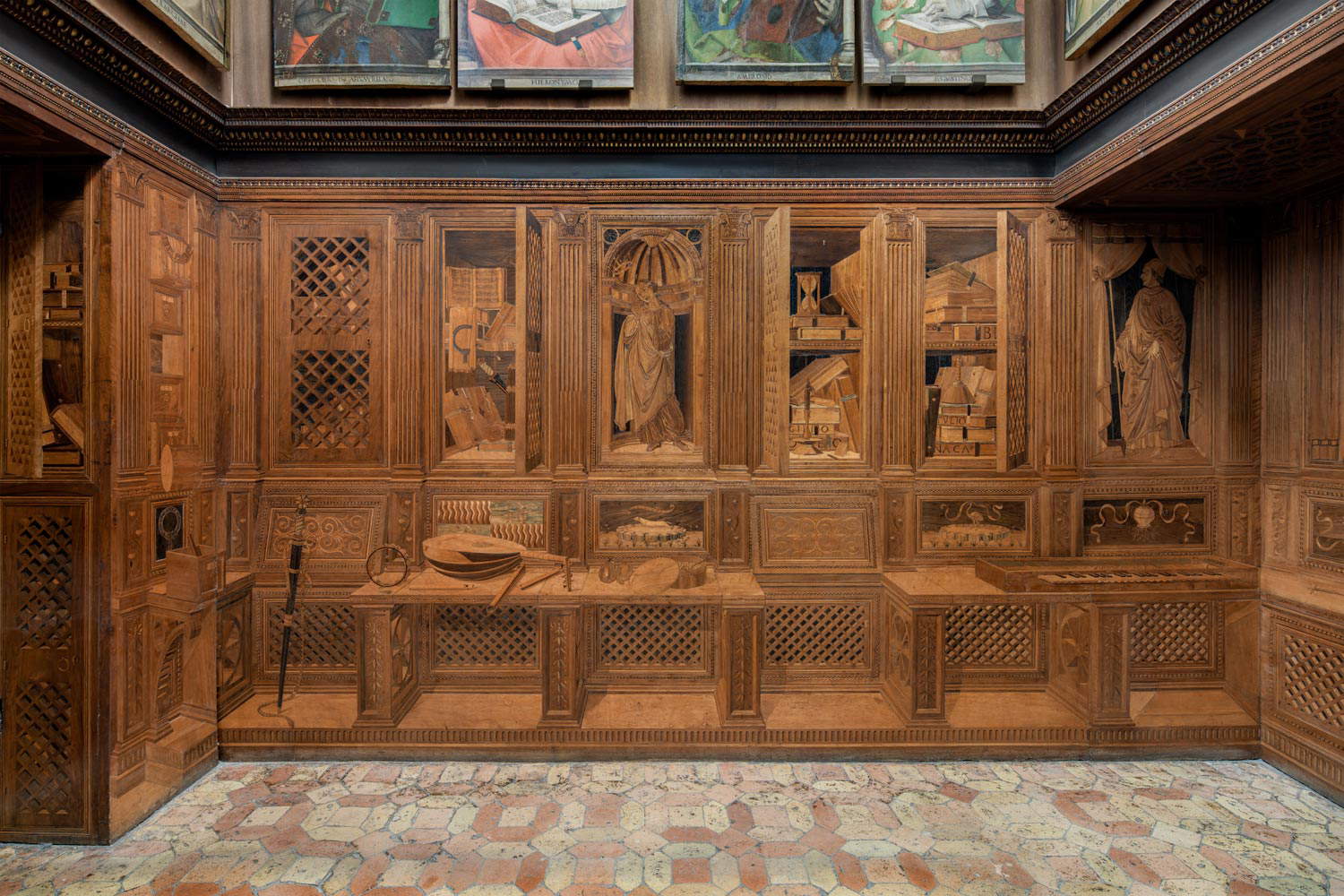 The Ducal Palace of
The Ducal Palace of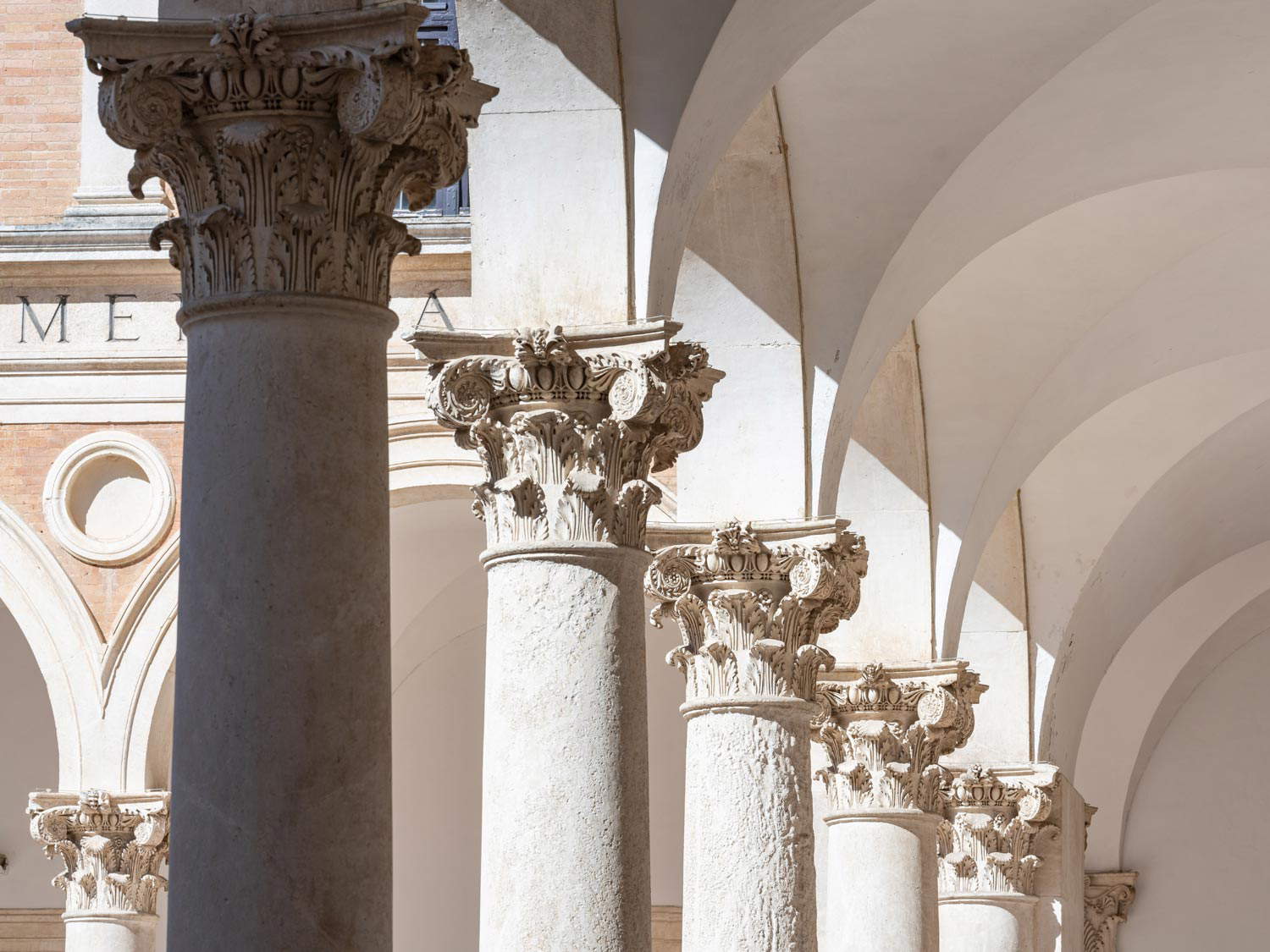 The Ducal Palace of
The Ducal Palace of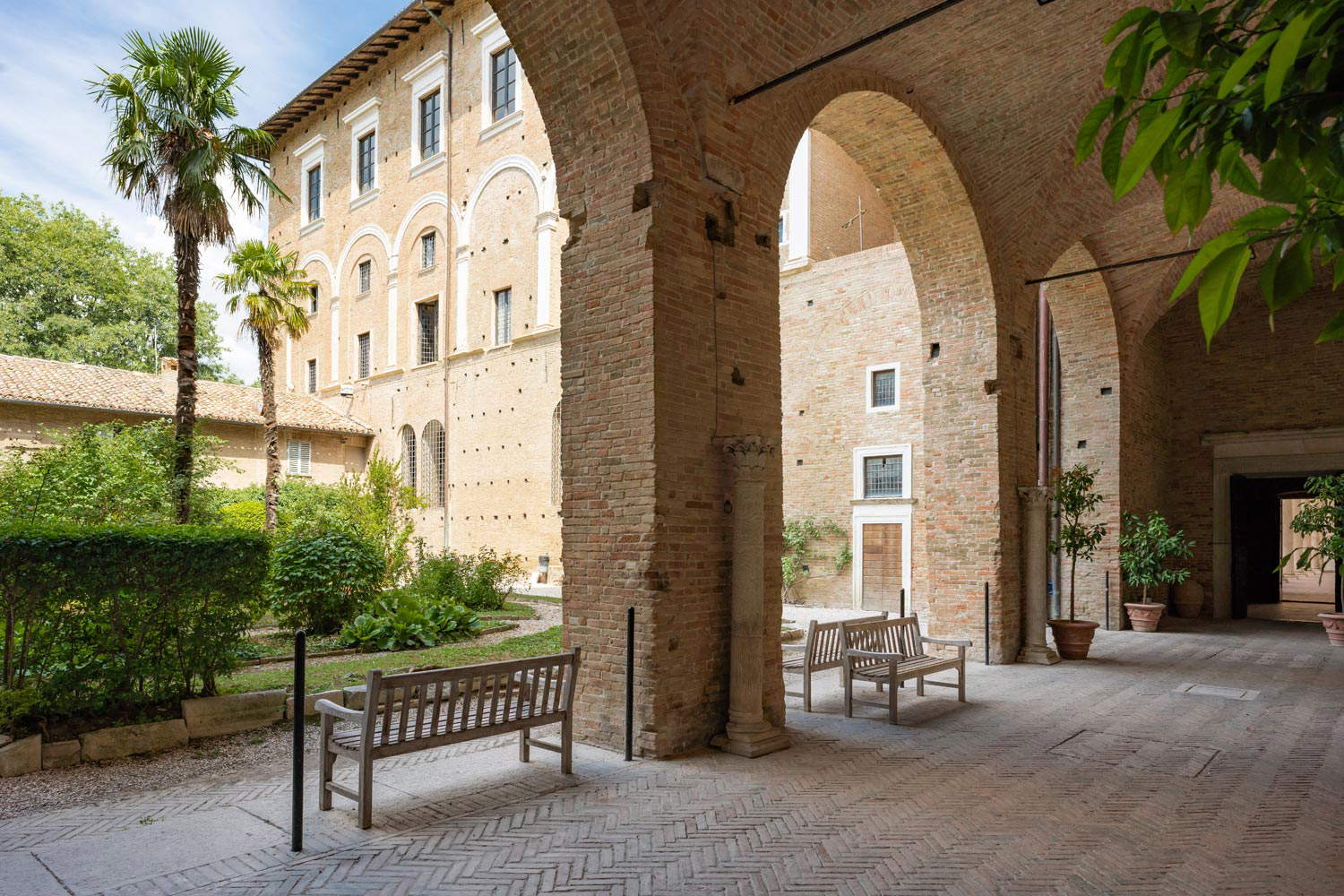 The Ducal Palace of
The Ducal Palace ofSpecifically, after the end of the Duchy the building was the seat of the Papal Legate and a prison. And again, after the Unification of Italy, it housed the Art Institute, the Book School, the offices of the Prefecture, a barracks, and a high school with related gymnasiums, organized in the basements designed by Francesco di Giorgio. Since 1912 it has been home to the Galleria Nazionale delle Marche, opened by a very young Lionello Venturi and later directed by such personalities as Luigi Serra and Pasquale Rotondi, who turned it into a repository of artworks during the dramatic years of World War II. In the service apartment, Giorgione’sThe Tempest was hidden under his bed. The palace has inspired the thinking of classical authors, such as Baldassarre Castiglione, and modern ones such as Carlo Bò, Giancarlo De Carlo, Paolo Volponi, and Manfredo Tafuri (whose magnificent unpublished text from his university lectures is presented in the catalog), who have updated its contents, offering it to contemporary times.
“The palace is, from its earliest fragments, a rich and dense palimpsest of interventions that have taken place over the centuries up to the present day,” explains Luca Molinari, curator of the exhibition. “From the first palace commissioned by Count Antonio Montefeltro overlooking the Piazza Grande, following the interventions of Guidantonio and Oddantonio, to the final vision of Federico da Montefeltro that leads in a few years to the construction of one of the most important monumental factories of the Italian Renaissance. But what we think of as a definitive image does not correspond to reality because within a few decades the Della Rovere family would build the second floor of the palace, and its interiors would then be dramatically emptied beginning in 1631, with trajectories that would lead the extraordinary patrimony of books and works to move to Florence and Rome. The interior spaces would be inhabited by papal legates, but many parts of it would in time house the judicial prison, the tribunal, the salt and tobacco warehouse, the notarial archives, the Raphael Academy and the book school. Only in the twentieth century did a series of enlightened and attentive superintendents work on the construction of the National Gallery and initiate phases of exhibition and restoration work that have continued to the present day.”
The exhibition will take place in different spaces at the Sopralogge on the second floor. Along the four sides of the courtyard it will be possible to see the rediscovery of the Ducal Palace through the contemporary gaze and the reinterpretation of its archetypal characters, through different types of analysis: architectural, graphic, typographic and photographic. The themes of this section of the exhibition are: The palace as an organism, the photographic work of ISIA students coordinated by Armin Linke that illustrates the transformations, processes and spaces of the Ducal Palace, by means of a work developed over the past four years; The palace as a machine, illustrations related to ten tiles in the image of those of Francesco di Giorgio, as if they were contemporary graphic posters elaborated by Guido Scarabottolo; The palace and writing, the reinterpretation of the typographic elements of the Palace through the project of ISIA students coordinated by Radim Pesko and Jonathan Pierini; The palace and its elements, with the ISIA photography course of Professor Paola Binante a photographic campaign of the architectural/decorative elements of the Palace was developed: interior portals, fireplaces, inhabited windows, door inlays and the doors themselves, floors and vaults.
At the four corners of the courtyard, on the other hand, the exhibition focuses attention on the palace as an archetype of collective architecture, four in-depth discussions with contemporary architects and authors who, together with Luca Molinari, reread some of the palace’s key features. The synthesis actions that look at the monumental body, making it read in its complexity and holding together the four long sides. These are four chapters that give the possibility to read the palace in its unity, but from different points of view: 1st corner/introduction: the dialogue between Luca Molinari and the palace, read as a “city in the form of a palace” with an axonometric cross-section; 2nd corner: Franco Purini on the relationship between the parts and the whole, reflecting on the relationship between mathematics/geometry and design; 3rd angle: Sara Marini through Giancarlo De Carlo’s studies rereading the palace as an urban megastructure; 4th angle: Annalisa Metta on the palace as a form of landscape rereading the relationship between interior and exterior landscape, as well as reading it as a territorial fragment.
The exhibition opens Tuesday through Sunday from 8:30 a.m. to 7:15 p.m. (ticket office closes at 6:15 p.m.), closed Mondays. Admission: € 10 full; € 2 reduced; € 1 reservation. Catalog published by Marsilio
National Gallery of the Marches. For info see the museum website.
 |
| Urbino, at the Galleria Nazionale delle Marche an exhibition dedicated to the Ducal Palace |
Warning: the translation into English of the original Italian article was created using automatic tools. We undertake to review all articles, but we do not guarantee the total absence of inaccuracies in the translation due to the program. You can find the original by clicking on the ITA button. If you find any mistake,please contact us.




























